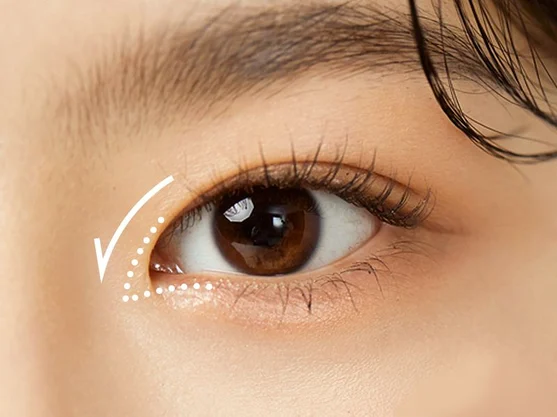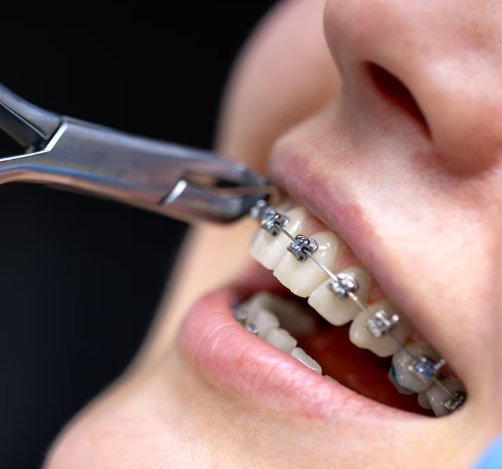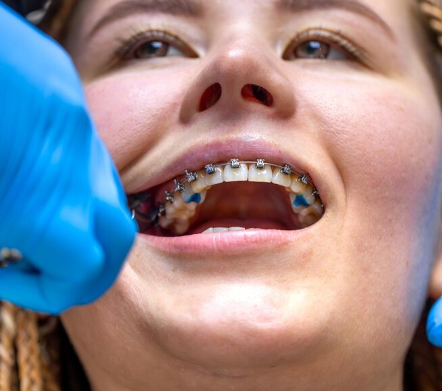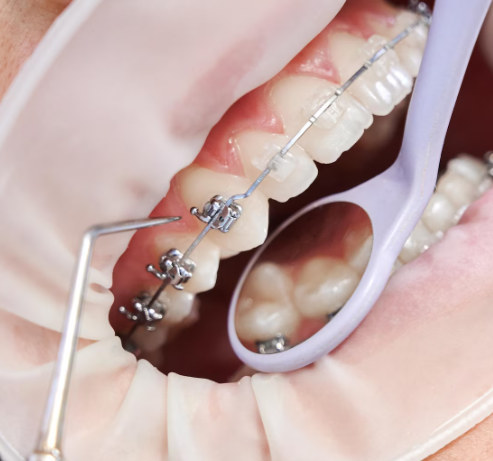Treatment Overview
Transcutaneous lower blepharoplasty is a surgical method used to correct under-eye bags, wrinkles, and loose skin by making an external incision just below the lower lash line. Through this incision, the surgeon can remove or reposition excess fat, tighten muscles, and excise sagging skin for a smoother, youthful appearance.
In Korea, this approach is often refined with advanced techniques like fat repositioning, skin tightening, and combination with laser resurfacing to achieve a natural, balanced look. It is particularly beneficial for patients who have significant skin laxity in addition to under-eye puffiness.
Purpose & Benefits
- Removes under-eye bags and puffiness
- Tightens loose or wrinkled lower eyelid skin
- Allows direct access to both fat pads and skin for comprehensive rejuvenation
- Smooths the transition between eyelid and cheek
- Long-lasting results compared to non-surgical methods
- Can be customized with fat repositioning to prevent hollow eyes
Ideal Candidates
- Patients with both under-eye bags and sagging skin
- Individuals with skin laxity and fine lines under the eyes
- Those who need more correction than transconjunctival surgery can provide
- Patients looking for permanent results with skin tightening
- People in their late 30s or older, or younger patients with significant skin laxity
Possible Risks & Complications
- Temporary swelling and bruising
- Visible external incision (though usually hidden under lash line)
- Dryness, tightness, or irritation of the eyes
- Rare risk of ectropion (outward turning of the eyelid) if excessive skin is removed
- Asymmetry or irregular contouring if healing is uneven
Surgical Techniques Used
Korean surgeons are known for advanced refinements of the transcutaneous approach:
- Subciliary Incision: Made just below the lash line to minimize visible scarring.
- Fat Repositioning & Preservation: Rather than just removing fat, it is redistributed to smooth out tear troughs.
- Skin & Muscle Tightening: Orbicularis oculi muscle is tightened to reduce sagging and improve eyelid support.
- Combination with Laser Resurfacing: Improves fine wrinkles and skin texture.
- Customized Correction: Tailored based on severity of fat bulging and skin laxity.
Recovery & Aftercare
- Initial swelling and bruising last 1–2 weeks.
- Stitches are usually removed within 5–7 days.
- Cold compresses, head elevation, and avoiding eye strain help recovery.
- Patients should avoid heavy lifting, smoking, and alcohol for 2–3 weeks.
- Makeup can typically be applied after 10–14 days once incision heals.
- Final results become visible after 1–3 months as tissues settle.
Results & Longevity
- Natural and youthful under-eye appearance
- Elimination of puffy eye bags and excess skin
- Long-lasting results, often 8–12 years depending on aging process
- Smoother contour between lower eyelid and cheek
- Improved eyelid support due to muscle tightening
Treatment Process in Korea
Korea is globally recognized for leading lower blepharoplasty surgeries, including the transcutaneous technique.
- Refined Aesthetic Techniques: Korean surgeons specialize in achieving subtle, natural results rather than over-correction.
- Scar Minimization: Advanced suturing ensures scars are nearly invisible and hidden beneath the lash line.
- Comprehensive Correction: Surgeons combine fat repositioning, skin removal, and laser treatments for complete rejuvenation.
- Cutting-Edge Technology: Many clinics use high-precision lasers and endoscopic assistance to minimize trauma.
- Medical Tourism Support: Top clinics in Seoul provide multilingual services, aftercare support, and personalized surgical planning for international patients.
Cost Range in Korea
The cost of transcutaneous lower blepharoplasty in Korea depends on clinic reputation, surgeon expertise, and whether additional techniques are included.
- Standard Surgery (skin + fat removal): ₩3,500,000 – ₩5,500,000 KRW ($2,700 – $4,200 USD)
- With Fat Repositioning & Muscle Tightening: ₩5,000,000 – ₩8,000,000 KRW ($3,800 – $6,200 USD)
- Premium Clinics in Gangnam, Seoul: ₩7,000,000 – ₩10,000,000 KRW ($5,400 – $7,700 USD)
- Comprehensive Packages (with laser resurfacing, PRP, or combination procedures): ₩8,000,000 – ₩12,000,000 KRW ($6,200 – $9,200 USD)
This is significantly more affordable than in the U.S. or Europe, where the same procedure can cost $8,000–$15,000, making Korea one of the most attractive destinations for lower blepharoplasty.
Popular Clinics in Korea
- ID Hospital (Gangnam): Known for specialized eyelid surgeries and scar-minimizing techniques.
- Banobagi Plastic Surgery: Offers advanced fat repositioning methods combined with lower blepharoplasty.
- View Plastic Surgery: Focuses on natural and scar-free results with personalized surgical plans.
- Dream Medical Group: Popular for combining laser resurfacing and fat repositioning with transcutaneous techniques.
- JK Plastic Surgery: Internationally recognized for premium-level care and advanced lower eyelid rejuvenation.
Summary
Transcutaneous lower blepharoplasty in Korea is ideal for patients with under-eye bags and significant skin laxity. Unlike the transconjunctival method, this approach allows removal of both fat and excess skin, providing comprehensive and long-lasting rejuvenation. With Korea’s advanced fat-preserving techniques, natural aesthetic philosophy, and competitive costs, it has become a leading destination for patients seeking lower eyelid surgery with world-class results.




